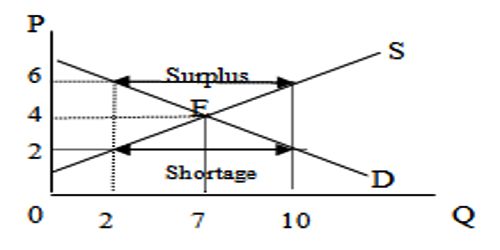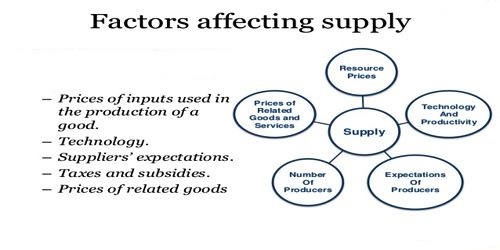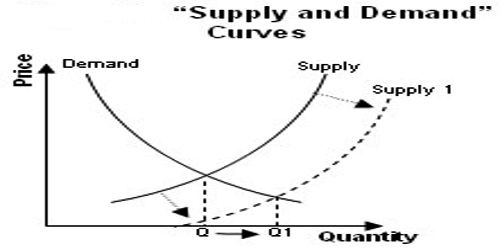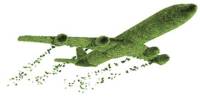Factor Affecting Supply:
Supply shocks
Supply shocks, the events that were not anticipated by firms, like natural disasters, sudden changes in weather, wars, transportation strikes, etc., also affect supply. The effect depends on the nature of shock. A shock that raises supply is called a “favorable” shock, whereas a shock that diminishes supply is an “unfavorable” shock. A dry spell of weather or drought reduces supply of agricultural crops, but a good weather increases supply.
Industrial Supply
There are generally many firms in an industry. Above we discussed supply of a single poultry firm. If the supply curves of all poultry firms in the poultry industry are added together, we get “industry supply curve.” Just like market demand curve, industry supply curve is the horizontal summation of individual firms’ supply curves. In other words, for each market price, the quantities supplied of all firms are added together to obtain the industry quantity supplied.
Market Equilibrium Price and Quantity:
Quantity traded of a good in the market and the price at which the good is traded are determined by the interaction of two market forces: market demand and industry supply. When buyers and sellers negotiate, they must mutually agree upon the quantity and price. The only point where such an agreement is possible is the point of intersection of market demand curve and industry supply curve (Point E in Figure).

Figure: Market Equilibrium
At a price of $4 a pound, buyers are willing to buy 7 pounds (according to the demand curve) and sellers are willing to sell 7 pounds (according to the supply curve). The price at which quantity demanded is equal to quantity supplied is called the “equilibrium price,” and the corresponding quantity is called the “equilibrium quantity traded.” The equilibrium price in the above graph is $4, and equilibrium quantity traded is 7 pounds. There is no shortage or surplus of goods in the market.
At any other price there is either a shortage (quantity demanded exceeds quantity supplied by 8 pounds at $2 price) or surplus (quantity supplied exceeds quantity demanded by 8 pounds at $6 price). Market cannot sustain such a situation; it must change to the equilibrium situation. In a situation of shortage (when market price is below the equilibrium price), there would be buyers whose demand won’t be met. So, buyers start bidding up the price to ensure that they can buy the good. As the price rises, suppliers start bringing more quantities to the market, whereas some customers, who were there to buy at a price of $2, start dropping out finding that price is rising. With the rise in price the gap between quantity demanded and quantity supplied starts shrinking. However, price keeps rising until the shortage is eliminated, which is until price reaches $4.

An increase in supply occurs when more is supplied at each price, this could occur for the following reasons:
- A decrease in costs of production. This means business can supply more at each price. Lower costs could be due to lower wages, lower raw material costs
- More firms. An increase in the number of producers will cause an increase in supply.
- Investment in capacity. Expansion in capacity of existing firms, e.g. building a new factory
- Related supply. An increase in supply of a related good e.g. beef and leather
- Weather. Climatic conditions are very important for agricultural products
- Technological improvements. Improvements in technology, e.g. computers, reducing firms costs
- Lower taxes. Lower direct taxes (e.g. tobacco tax, VAT) reduce the cost of goods
- Government subsidies. Increase in government subsidies will also reduce the cost of goods, e.g. train subsidies reduce the price of train tickets.
In a case of surplus, which happens when market price is above the equilibrium price, sellers find their inventory building up, having not sufficient buyers for their good. To get rid of surplus, sellers start lowering their prices. At lower prices, quantity demanded shall rise and quantity supplied shall fall. Price is lowered until quantity supplied becomes equal to quantity demanded. The market settles down at the equilibrium position. Once in the equilibrium, there is a tendency for the market to remain at that state.
Information Source:
















